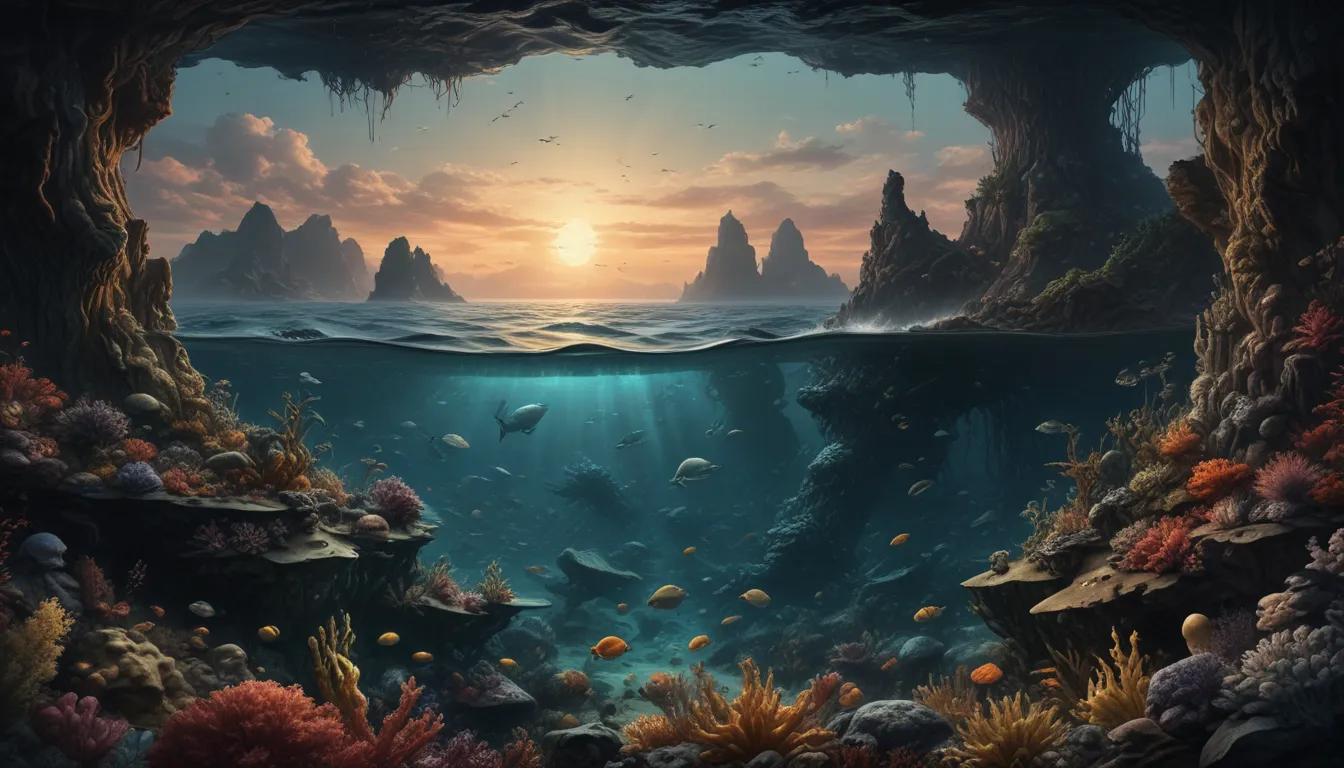A Note About Images: The images used in our articles are for illustration purposes only and may not exactly match the content. They are meant to engage readers, but the text should be relied upon for accurate information.
The Abyssal Plain, also known as the abyssal zone, is a captivating and enigmatic part of the ocean that continues to intrigue scientists and researchers worldwide. Spanning across vast ocean basins, this flat and muddy seafloor lies thousands of meters beneath the surface, shrouded in mystery and home to a diverse range of specially adapted organisms. In this article, we will explore 20 intriguing facts about the Abyssal Plain, shedding light on its unique geological features, extraordinary marine life, and ongoing scientific research efforts aimed at unraveling its mysteries.
Key Takeaways:
- The abyssal plain, with its vast expanse and unique marine life, plays a crucial role in the global ecosystem and offers valuable insights into Earth’s history and geological processes. Amidst its extreme depths and harsh conditions, the abyssal plain remains a fascinating and enigmatic part of our planet, waiting to be explored and understood.
The Fascinating Abyssal Plain:
- Largest and Flattest Ocean Floor Segment:
-
Covering approximately 60% of the Earth’s surface, the abyssal plain stands as the largest and flattest part of the ocean floor. Its smooth topography is a result of sediment accumulation over millions of years.
-
Extreme Depths and Temperatures:
-
Located at depths between 3,000 and 6,000 meters, the abyssal plain remains one of the least explored areas on the planet. Its chilling temperatures range from 2 to 4 degrees Celsius, unaffected by seasonal changes.
-
Diverse Marine Life Adaptations:
-
Despite its harsh conditions, the abyssal plain is home to a wide variety of marine life that has uniquely adapted to survive in this deep-sea environment.
-
Critical Habitat and Carbon Sink:
-
Serving as essential habitats for deep-sea organisms, the abyssal plain also acts as a crucial carbon sink, sequestering carbon dioxide from the atmosphere and playing a vital role in the global carbon cycle.
-
Scientific Research and Exploration:
- Utilizing remotely operated vehicles (ROVs), scientists study the abyssal plain to gain insights into oceanography, geology, marine biology, and the impacts of climate change on deep-sea ecosystems.
Unveiling the Secrets of the Abyssal Plain:
- Geological Features: Rich in valuable mineral deposits, the abyssal plain is also home to fascinating geological features such as seamounts, trenches, and underwater canyons, adding to its diversity.
- Pressure and Currents: Under the influence of powerful underwater currents like the Antarctic Circumpolar Current, the abyssal plain experiences incredibly high pressure, reaching up to 50 times the atmospheric pressure at sea level.
- Slow Sediment Deposition: Incredibly slow sediment deposition on the abyssal plain results in characteristic layers that can take thousands to millions of years to form.
Nurturing Exploration and Conservation Efforts:
- Scientific Significance: The abyssal plain serves as a site for valuable scientific research, offering insights into Earth’s geological history, marine ecosystems, and the impact of human activities on deep-sea environments.
- Challenges and Threats: Despite its importance, the abyssal plain faces challenges from human activities such as deep-sea mining, pollution, and climate change, posing threats to its delicate ecosystem.
The Abyssal Plain: An Enduring Enigma
In conclusion, the abyssal plain stands as a remarkable and mysterious feature of the Earth’s ocean floor, unlocking secrets of our planet’s history and offering glimpses into the intricate workings of marine ecosystems. As we venture deeper into its depths, we continue to discover new wonders and face the responsibility of preserving this fragile underwater landscape. The abyssal plain remains an enduring enigma, holding promises of further exploration and understanding for generations to come.
FAQs: Unraveling the Abyssal Plain
- What is an Abyssal Plain?
-
An abyssal plain is a vast, flat region on the ocean floor characterized by its depth and featureless topography, typically found in the deep sea.
-
How are Abyssal Plains formed?
-
Abyssal Plains are formed through the accumulation of sediment, volcanic activity, tectonic forces, and oceanic currents over millions of years, resulting in a smooth and flat surface.
-
What organisms live in the Abyssal Plain?
-
The Abyssal Plain is home to a diverse array of marine life, including deep-sea fish, octopuses, corals, and various bacteria and microorganisms that have adapted to its extreme conditions.
-
Are there resources found in the Abyssal Plain?
-
The Abyssal Plain contains valuable resources such as polymetallic nodules, manganese, cobalt, and rare earth elements, attracting interest for potential mining activities with environmental challenges.
-
Can Abyssal Plains reveal Earth’s history?
- Abyssal Plains serve as geological time capsules, providing insights into past climate changes, tectonic activity, and ancient life forms through the study of sediment composition and layers.
Delving Deeper into the Abyssal Plain
The mysteries and wonders of the abyssal plain continue to captivate scientists, researchers, and enthusiasts alike, offering a glimpse into the hidden realms of our planet’s oceans. With each discovery and exploration, we uncover new facets of this remarkable underwater landscape, shedding light on its importance and fragility. As we navigate the depths of the abyssal plain, let us remain steadfast in our commitment to understanding, protecting, and preserving this extraordinary part of our world.






